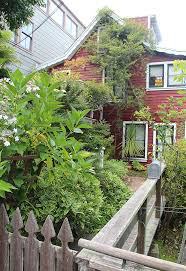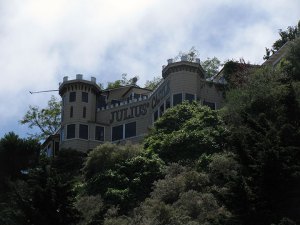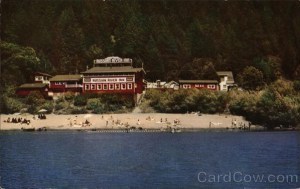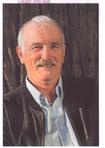John Michael McCarty's Blog, page 19
February 13, 2016
Village Inn in Monte Rio
Stumptown Daze, a romantic comedy novel, has a scene at Monte Rio’s Village Inn.
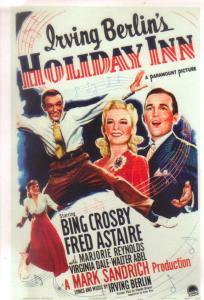 In Stumptown Daze, our caregiver Lani and her new boyfriend Jake have a mishap at the Village Inn on their way to another iconic restaurant–Angelo’s. To this day, the Village Inn is not only a favorite spot for the wife and me, but also for luminaries from the nearby Bohemian Grove.
In Stumptown Daze, our caregiver Lani and her new boyfriend Jake have a mishap at the Village Inn on their way to another iconic restaurant–Angelo’s. To this day, the Village Inn is not only a favorite spot for the wife and me, but also for luminaries from the nearby Bohemian Grove.
In older days, the Russian River Rat Pack consisted of Bing Crosby, Bob Hope, Phil Harris and Danny Kaye–all fine Catholics until they arrived at the summer retreat.
The Beginning
In 1906 the Ludwig family built their summer home on the south bank of the Russian River in Monte Rio. In 1908, hotel construction began on the property and it became known as Ludwig’s Grove—possibly to identify with the nearby Bohemian Grove. In the 1930’s, the building’s name was changed to River View Inn and then to Holiday Inn, after the 1942 Bing Crosby and Fred Astaire classic movie, which was partially filmed at the resort. The film’s iconic theme song, “White Christmas”, won the 1943 Academy Award for Best Movie Song, written by Irving Berlin. In 1952, the vacation spot was renamed Village Inn. Its current owners are Judy Harvey and Roger Hicks.
The post Village Inn in Monte Rio appeared first on John McCarty.
Filbert Steps in San Francisco
In Stumptown Daze, we find wily dementia patient Walt living with his Rotuman caregiver Lani on the east side of Telegraph Hill along the Filbert Steps in San Francisco. These two characters own a tempestuous relationship amid the peace and calm of this hidden gem. One of Walt’s favorite activities is to perch himself on the back deck and watch the scenery, which includes the Embarcadero, Bay Bridge and a lovely lady who often tans herself on the roof of a residence further down the lane.
The Filbert Steps is my favorite hideaway in the city, well-known for its lush gardens and plank alleys. Those sidewalks are actually an extension of Filbert Street and thus the lone wooden boulevard in northern California. The stairs (all 248 of them) are the only access to homes along the way, except at the crossing of Montgomery Street. Napier Lane showcases a half-dozen residences, which date back to the 1860’s and 1870’s (see image). Many were reputedly used as holding pens for drugged sailors during the gold rush era until they could be loaded onto vessels below the hill at the wharf (now filled-in land along Battery Street) and shanghaied back out to sea.
Some of the more famous movies that were filmed near and around Filbert Steps are: Dark Passage with Humphrey Bogart (1947); Pal Joey with Frank Sinatra (1957); Alfred Hitchcock’s Vertigo with Jimmy Stewart (1958); and the 2003 documentary-The Wild Parrots of Telegraph Hill.
http://www.creativejewishmom.com
The post Filbert Steps in San Francisco appeared first on John McCarty.
February 10, 2016
Julius Castle in San Francisco
Stumptown Daze, a 1960 romance comedy novel, starts on the east side of Telegraph Hill near Julius Castle.
In 1924, less than a year after construction on the Castle began, food service was under way, establishing Julius Castle as among the oldest San Francisco restaurants at its original location with its original name.
This amazing structure combines fairy tale elements, such as pointed arched windows and medieval-style battlements on the upper balconies, all mixed with Gothic Revival and Arts-and-Crafts influences. Interior wood paneling was reputedly purchased from the city’s 1915 Panama Pacific International Exposition.
At the time, Montgomery Street was little more than a dirt trail wide enough for one vehicle. Because the street was so narrow, a turntable was installed in 1931 at the dead-end in front of the castle and an employee turned cars around and parked them. During Prohibition, Julius’ Castle became a speakeasy for the carriage trade. It has been a popular celebrity hangout for local politicians, musicians such as Huey Lewis and Hollywood actors, including Robert Redford, Cary Grant, Sean Connery, Marlon Brando and Ginger Rogers. Even famed Mount Everest climber Sir Edmund Hillary was a patron. At the present moment, however, it remains closed and seemingly abandoned after operating as a restaurant for more than 80 years.
Image from FoundSF.org.
The post Julius Castle in San Francisco appeared first on John McCarty.
February 6, 2016
Guernewood Park
Guernewood Park
In 1865, George Guerne, a young Swiss immigrant, bought a sawmill, and in 1870 Stumptown was renamed Guerneville in his honor. He also purchased adjoining parcels, which became known as Guernewood Park. The unincorporated subdivision, which rested west of the main town, possessed a tavern as well as a dance hall where some of the Big Bands performed in the 1930’s &1940’s. But the most popular orchestras were homegrown such as the Harry Davis Orchestra and the Castles Family Band. At one time there existed an indoor bowling alley, an outdoor movie theater, and stables, which provided both hayrides and horseback adventures. Guernewood beach was one of the more popular spots along the lower reaches of the Russian River during the 1950’s & 1960’s, featuring concession stands, boat rentals, a high dive board and a forty-foot slide. Butting up against Hulbert Creek were a food market and liquor store, a bakery, the Sportsman Club bar, and a restaurant. This section was torn down in the late 1960’s, giving way to an empty lot. The tavern was later abandoned, vandalized and burned down around 1974.
During the 1940’s, Guernewood Village was another popular destination, which stood across the road from present day Dubrava and Highway 116 (formerly known as Highway 12 until 1961). Past an arched entrance, a walkway would lead to a café, game booths (including Skee-Ball and a baseball throw with milk bottles, etc.), a four-lane bowling alley, a pool hall, a clubhouse, an outdoor movie theater, and Noble’s Grocery Store. A dance pavilion was later converted into a roller skating rink. Catholic Sunday services were held in an open-air church, which was located on Lover’s Lane. The apse, where the altar and pulpit once stood, is still visible today.
The post Guernewood Park appeared first on John McCarty.
January 28, 2016
Sutro Baths – San Francisco
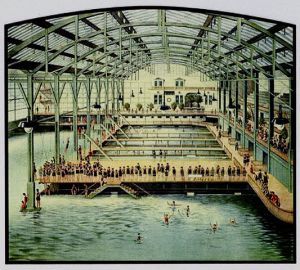
Sutro Baths was opened to the public near the Cliff House in S.F. in 1896 as the world’s largest indoor pool facility and burnt down in 1967. Its six salt pools were fed at high tide by ocean waters. There was one fresh water pool, diving boards and bleachers to accommodate several hundred spectators. Crazy.

